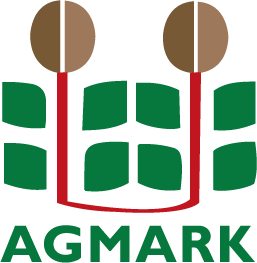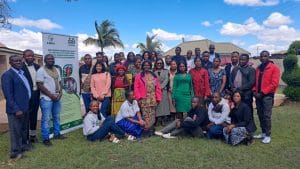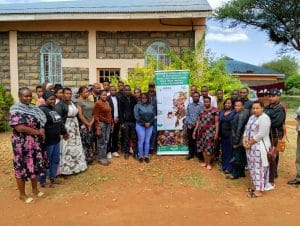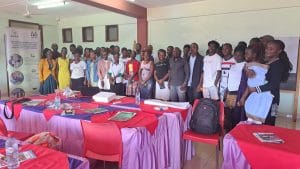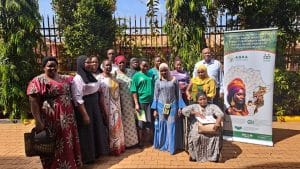At the border district of Busia, Uganda, where trade flows daily between Uganda and Kenya, smallholder farmers are quietly shaping the future of local food systems. One such group is Sibahola Nobona Farmer Organization, based in Bumonye Parish, Masinya Sub-County. With just 30 dedicated members, 15 clustered in Buwali village and 15 in nearby areas, this grassroots organization is pooling land, labor, and knowledge to make maize farming more sustainable and profitable.
What is a Farmer Organization?
A farmer organization is a group of smallholder farmers who unite to tackle shared challenges in agriculture. These groups provide farmers with a stronger collective voice and practical benefits such as:
While farmer organizations may look similar to cooperatives, there is a difference:
Cooperatives are more formalized, often legally registered with set membership fees, constitutions, and strict governance structures.A Farmer organization, on the other hand, can be more flexible. They may start informally as groups around villages or trading centers and gradually evolve into larger, structured bodies.In Busia, groups like Sibahola Nobona have become vital in linking smallholder farmers to cross-border grain markets, creating opportunities for women and youth, and strengthening trade in the region.
- Better markets & fairer prices – through collective bargaining
- Training & skills development – to improve farming practices
- Bulk input purchases – lowering the cost of seeds, fertilizers, and tools
- Market standards compliance – ensuring produce meets trade requirements
- Policy advocacy – amplifying farmer concerns at local and regional levels
While farmer organizations may look similar to cooperatives, there is a difference:
Cooperatives are more formalized, often legally registered with set membership fees, constitutions, and strict governance structures.A Farmer organization, on the other hand, can be more flexible. They may start informally as groups around villages or trading centers and gradually evolve into larger, structured bodies.In Busia, groups like Sibahola Nobona have become vital in linking smallholder farmers to cross-border grain markets, creating opportunities for women and youth, and strengthening trade in the region.
A Shared Commitment to Maize Production
On five acres of communal land in Buwali, Sibahola Nobona’s members have planted maize, experimenting with different seed varieties to improve yields. While many have long relied on Pioneer and Western Seed varieties, this season they trialed a new hybrid sourced from an agrovet across the Kenyan border. The results have been promising: yields are projected to rise from 30 bags last season to as many as 45 bags this harvest.
Youth and Women at the Core
A striking feature of Sibahola Nobona is its reliance on youth labor, especially young women from the community. From digging holes and planting to weeding and harvesting, these young people form the backbone of production. During peak planting, as many as 30 youth were engaged, with over two-thirds being women. For them, the fields are not just a workplace but are a source of daily income and practical farming skills.
Local Markets, Local Value
Once harvested, maize from Sibahola Nobona is sold through local produce stores in Busia. Traders come directly to the farms to buy in bulk, later transporting it to wider markets. While this system provides quick cash for farmers, it leaves little room for value addition or bargaining power. Prices swing sharply, from as low as UGX 800 per kilo in the harvest glut to UGX 2,500 per kilo in leaner months.
Challenges on the Ground
Like many farmer groups in Uganda, Sibahola Nobona faces hurdles that threaten its sustainability:
- Soil Fertility Decline – Continuous maize cultivation without sufficient compost or rotation has weakened the land, inviting stubborn weeds like Striga.
- Climate Risks – Erratic rainfall patterns make harvests uncertain, with drought emerging as a recurring threat.
- Limited Training – Members acknowledge gaps in best agronomic practices such as spacing and canopy cover and soil fertility management.
- Market Dependence – Reliance on local traders limits their ability to capture better prices further afield.
Lessons & Opportunities for Growth
Yet, there is strong potential for Sibahola Nobona to grow as a model farmer organization. With targeted support in training, soil management, and financial literacy, the group could:
- Adopt cover cropping and composting to rebuild soil fertility.
- Leverage crop insurance through banks like Equity or Old Mutual to cushion against drought losses.
- Explore structured aggregation models to collectively bargain with larger buyers or processors.
- Strengthen linkages with seed companies for trials and tailored advisory.
The resilience of Sibahola Nobona shows the value of community-based farmer organizations in Uganda’s border districts. By pooling their efforts, even small groups of farmers can begin to shift from subsistence to more market-oriented agriculture. What they need is consistent support and not just inputs, but the training and financial tools to withstand shocks and scale opportunities.
As one member put it:
As one member put it:
“Our planting format is still local. We need more training and support to improve our land. That way, farming can truly become a business.”
